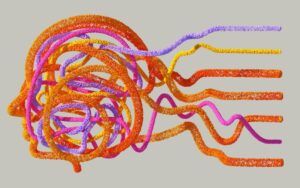
Art Clomera
Vice President, Operations
Plan of Action & Milestones (POA&M) management is the act of compiling a must-do list outlining the actions and milestones needed to address security vulnerabilities and weaknesses within an information system. To this end, a POA&M is a potent management tool because deadlines are assigned for each task, and team members are held directly accountable for addressing security issues that have been prioritized on time.
POA&M management might seem like a drop in the ocean in this highly coordinated, increasingly sophisticated threat landscape. But even in the age of AI and cyber warfare, boots on the ground still matter. One POA&M Excel spreadsheet cannot turn the tide. But data-driven autogenerated POA&Ms and NIST Open Security Controls Assessment Language (OSCAL) generated POA&Ms can.
In this blog, we’ll explore the often time-consuming and complex process of POA&M management. For anyone familiar with the journey, opening a new POA&M document to kickstart identifying the risks and deviations in an information system can feel like opening a can of worms. But as cybersecurity experts working in the trenches day-in-day-out, that feeling you get after a POA&M’s completion (despite the inevitable challenges) can feel like you’ve just come to the end of a long adventure. And that is a wonderful thing.
Why do you need to continuously monitor POA&M?
A POA&M must be endlessly updated and revised to provide an up-to-the-moment snapshot of the health of an agency’s security posture and the measures to correct it. The frequency of your POA&M reviews is determined by organizational policies, regulatory requirements, and the nature of the security weaknesses being addressed. Organizations should establish a regular cadence for reviewing and updating the POA&M to ensure accuracy and effectiveness in addressing security vulnerabilities.
Here are some of the most important questions to include in a POA&M:
- How many security weaknesses have been identified in the control environment?
- What corrective actions are needed to address each identified security weakness?
- Have the corrective actions been prioritized based on impact level?
- What’s the ETA for completing each corrective action?
- Are there any dependencies or interdependencies between the corrective actions?
- Have the responsible individuals or teams been assigned for each corrective action?
- What resources (e.g., personnel, budget, technology) are needed?
- Has the progress of each corrective action been tracked and documented?
- Have any corrective actions been completed, and if so, what were the outcomes?
- How frequently are the status and progress of the corrective actions reported to relevant stakeholders?
(Download your free POA&M template here.)
5 components of effective POA&M management and continuous monitoring
A POA&M is a high-value to-do list, listing the vulnerabilities and countermeasures federal agencies must take to eliminate them. By coordinating the priority order of tasks, they have proposed remediation, team members assigned to each task, milestones that indicate success, and scheduled completion dates. A POA&M helps organizations coordinate efforts and share the plan easily with the rest of the organization. What are the five things needed to coordinate these actions and milestones?
1. Review tasks and milestones
It’s important to regularly go through and update the tasks and milestones listed in the POA&M for accuracy and to ensure they still match the organization’s aims regarding security goals and compliance. As you do this, keep an eye on how each task moves forward and if the milestones are being hit on time. If you notice any delays or issues cropping up, work with the people involved to determine how to address them. Also, ensure the right teams or individuals are assigned to the tasks by collaborating with stakeholders. This way, everyone knows who’s responsible for what, and it’s clear how things are progressing.
2. Review resources and dependencies
The second component involves the review of resources and dependencies. This involves identifying the resources required to implement corrective actions and dependencies between tasks. By reviewing resources and dependencies, organizations can ensure that they have the necessary resources to complete corrective actions and that tasks are completed in the correct order. It’s crucial as it helps organizations identify potential roadblocks and ensure corrective actions are done efficiently and effectively.
3. Monitor progress and status
Effectively managing and continuously monitoring a POA&M involves vigilant oversight of task progress and status. Regular updates to the POA&M ensure an accurate reflection of task completion, ongoing efforts, and potential delays, fostering transparency and alignment. Establishing measurement criteria, utilizing automated tracking systems, and employing standardized reporting mechanisms streamline progress reporting to stakeholders and facilitate systematic vulnerability resolution.
4. Address identified weaknesses and deficiencies
This component documents flaws in the security controls via risk assessments, audits, or comprehensive security evaluations. Once vulnerabilities are identified, specific strategies and actions are proposed, tailored to counter each of the weaknesses or deficiencies. Reviewing and updating the POA&M regularly is essential to allow for a true reflection of the progress made in addressing the identified security gaps. As security measures are put into practice, modified, or completed, the POA&M should be adjusted to match the evolving state of the security controls.
5. Ensure compliance and reporting
Organizations must establish mechanisms for adhering to regulations and internal policies to ensure security compliance and accountability. Continuous validation of task execution against planned schedules is crucial for monitoring progress and addressing deviations at this stage. Keeping the POA&M up-to-date with current progress, completed tasks, ongoing activities, and delays enables accurate tracking of security enhancement efforts. Talking openly with everyone involved builds trust and a collective spirit of commitment.
The art of POA&M management: Adapting to changing circumstances
Sometimes, the POA&Ms that appear simplest to complete are the ones that keep us working on weekends. During the monitoring process, we’re surprised when there aren’t any curveballs, changing the scope, resources, and timelines. Sometimes, mid-way through a project, unforeseen new requirements surface, like hydras – as soon as you address one, two more emerge. Suddenly, you’re short on resources. Now you’re delayed, and your carefully crafted timeline’s gone out the window. This is where the art of POA&M management comes in. How do you plan to take a hit and keep moving?
10 best practices for successful POA&M continuous monitoring
With the frequency of attacks showing no signs of slowing, continuously monitoring a Plan of Action and Milestones (POA&M) takes on even greater gravity. It demands a systematic approach that guarantees alignment with security objectives while staying adaptable to dynamic environments. We are well-versed in partnering with federal agencies to navigate the complexity inherent in this process. Below is a checklist outlining 10 best practices. Systematically moving through the journey ensures that organizations remain secure, compliant, and prepared against emerging threats.
1. Establish a regular review cadence:
- Regularly review and update the POA&M to maintain alignment with security objectives.
- Set a schedule for reviews, considering security assessments and environmental changes.
- Factor in security assessments and changes in the organization’s environment for review timing
2. Maintain open communication among team members:
- Make sure there’s a clear system for team members involved to stay connected.
- Encourage collaboration and information sharing about POA&M changes, progress, and challenges.
- Schedule time to ensure everyone’s informed and on the same page regarding the POA&M’s status.
3. Prioritize and track corrective actions:
- Prioritize actions based on the severity of impact and assign responsible individuals or teams.
- Monitor progress, update completion status, and reflect changes in the POA&M.
- Integrate automation with vulnerability management systems for real-time progress tracking.
4. Leverage automation and AI-based software tools:
- Use battle-tested trusted automation and AI tools for streamlined POA&M management.
- Automate generation, tracking, and updates of the POA&M as vulnerabilities are addressed.
- Integrate automation with vulnerability management systems for real-time progress tracking.
5. Align with relevant standards and regulations:
- Ensure POA&M compliance with applicable security standards and regulations.
- Update the POA&M to reflect changes in regulations and industry best practices.
- Address compliance gaps identified through audits or assessments related to standards.
6. Conduct periodic risk assessments:
- Regularly assess risks to identify new vulnerabilities.
- Integrate assessment findings into the POA&M to address emerging risks.
- Involve relevant stakeholders in diverse perspectives during risk assessments.
7. Document and report progress:
- Document corrective action progress in the POA&M
- Provide regular reports to demonstrate compliance and progress to stakeholders.
- Use visual representations like graphs to engage people and enhance understanding.
8. Ensure accountability and ownership:
- Define clear roles and responsibilities for POA&M management.
- Assign ownership for completing corrective actions.
- Empower responsible parties with authority and resources for effective execution.
9. Continuously monitor and update the POA&M:
- Implement an ongoing monitoring process for accuracy and relevance.
- Update the POA&M as new vulnerabilities are identified or circumstances change.
10. Seek external expertise if needed:
- Consider external experts or consultants for guidance.
- Gain fresh perspectives and specialized knowledge to enhance POA&M effectiveness.
- Are they trusted by other federal agencies, such as the Department of Defense (DoD)?
Automate POA&M continuous monitoring with IPKeys Technologies, LLC
Advanced analytics to respond to an advanced persistent threat (APT)
IPKeys can support constant monitoring and protection of organizational systems by employing a security operations center with advanced analytics. Advanced analytics can help detect unusual activity patterns and proactively identify and respond to APTs. By leveraging advanced analytics, IPKeys can identify and mitigate APTs more effectively, reducing the risk of data breaches and unauthorized access to organizational systems. This feature allows for proactive threat detection and response, enhancing the organization’s security posture.
Continuous monitoring strategy
We offer a continuous monitoring strategy that helps organizations reduce costs associated with manual security assessments, compliance reporting, and incident response. This aligns with the principles of SP 800-12, which emphasizes the importance of continuous monitoring to maintain the security of information systems.
Industry-driven, Federal agency/ DoD-optimized
Solutions and services provided by IPKeys are tailored to meet the specific needs and requirements of the defense industry. Organizations can benefit from a comprehensive and robust cybersecurity approach that aligns with industry best practices and regulatory standards (e.g. DoDI 8510.01 Risk Management Framework for DoD Systems – dated July 19, 2022, DoD Zero Trust Strategy – dated November 7, 2022, and DoDI 8531.01 DoD Vulnerability Management – dated September 15, 2020) by utilizing industry-driven and Federal agency-optimized solutions.
OSCAL POA&M model
We utilize the OSCAL (Open Security Controls Assessment Language) POA&M model. The OSCAL POA&M model provides a standardized, structured approach to tracking and reporting cybersecurity weaknesses. This feature streamlines the process and ensures all intermediate steps required to resolve and rectify cybersecurity weaknesses are properly addressed.
Comprehensive vulnerability identification
IPKeys employs dedicated professionals and tools to find vulnerabilities accurately and exhaustively in an organization’s unique work environment. This feature ensures a thorough assessment of vulnerabilities, allowing organizations to prioritize and address them effectively. By utilizing IPKeys’ vulnerability identification capabilities, organizations can enhance their overall security posture and reduce the risk of cyber threats.
Let us know if you’re ready to automate your POA&M management.



